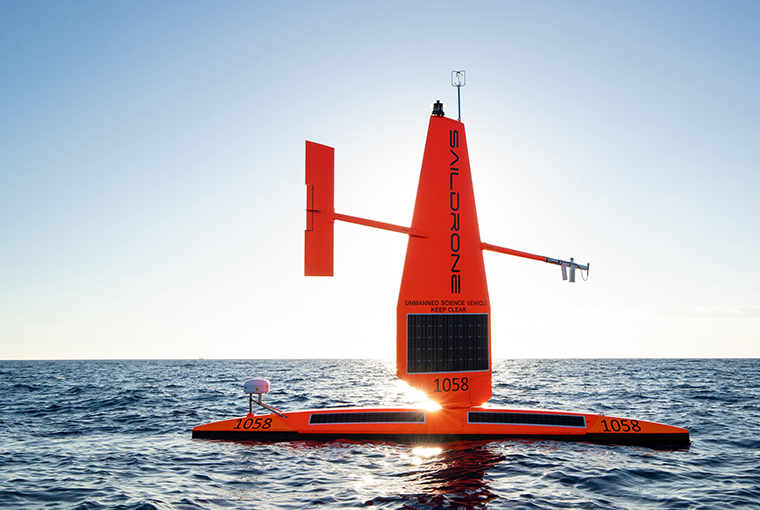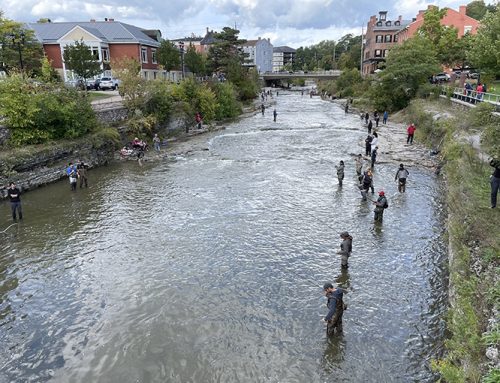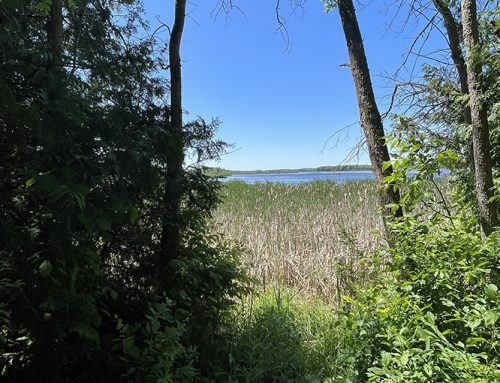
Traditionally large, diesel-powered boats using echo sounders collected data. Researchers, however, have long questioned whether their engines scattered fish and skewed data.
The solution was Saildrone, a wind and solar-powered vehicle. Using echo sounders, the Saildrone provides data on the density of fish schools, fish size, and their position in the water column.
In 2021, the United States Geological Survey, in combination with several partners, including the Ministry of Natural Resources and Forestry (MNRF), launched two Saildrone Explorers in Lake Michigan. Looking like a bright orange futuristic sailboard, these craft don’t create the engine noise suspected of scattering fish.
The work is part of a four-year assessment to determine if the data collected by the diesel-powered boats was biased, and if so, to what degree.
“We hypothesize that noise produced by vessels will reduce density, reduce the average size of fish detected, and also drive the fish deeper in the water column,” said Peter Esselman of the USGS. “The Saildrone also gives us information about lake surface temperature, algae pigment concentrations, wave height, and meteorological observations above the water.”
The 2021 work was carried out on Lake Michigan and Lake Huron, including on the Canadian side. This year Saildrone work was done on both sides of the border on Lake Superior, and there are plans for Erie and Michigan/Huron again in 2023.






Leave A Comment